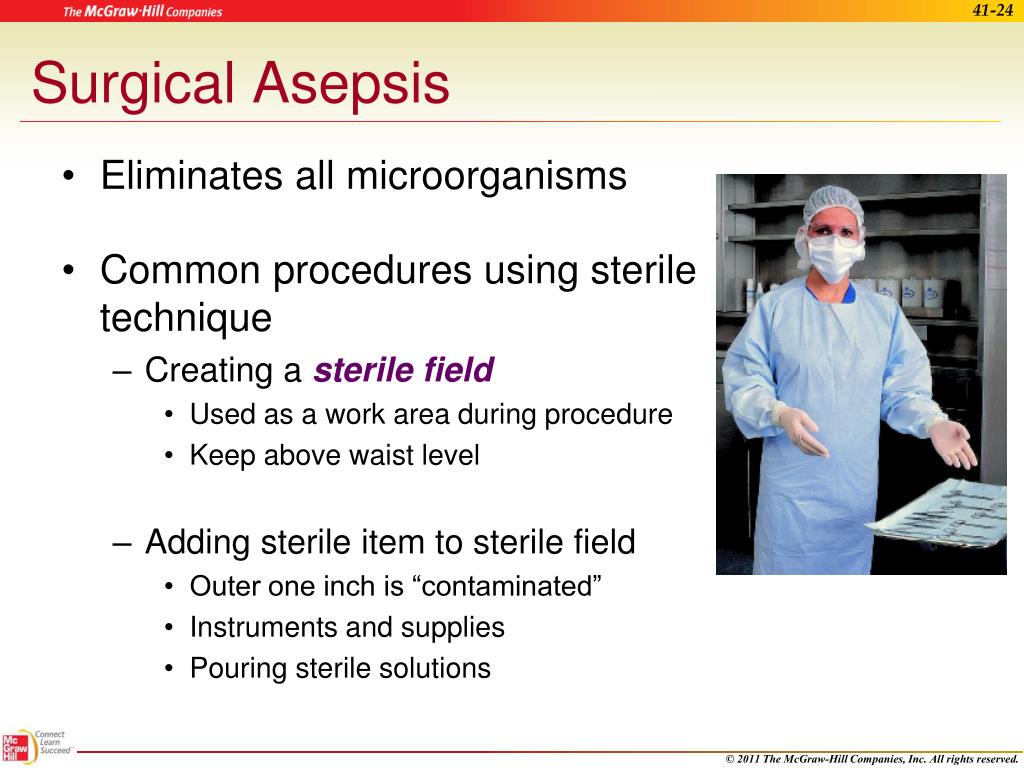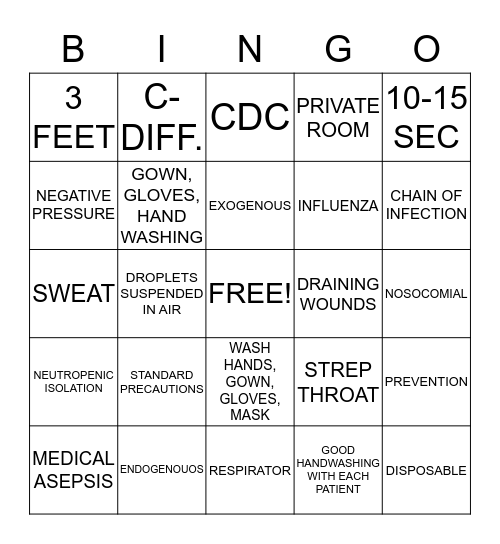

This is to keep you from reaching over the sterile field. Then open the flap on the right side with your right hand, then the flap on your left side with your left hand.Open the top flap of the package first open it away from you.Position all packages so that the top flap will open away from your body.When opening sterile packages, follow this protocol: Sterile fields should always be established as close as possible to the time of a procedure and, once established, should not be left unattended. Bacteria can grow rapidly in areas that become wet. For example, when pouring a sterile solution into a sterile container, if any splashes onto a sterile item, that item is no longer considered sterile. If an object becomes wet, it is no longer sterile. This is because when our hands are at our sides, we tend to forget about them during a sterile field situation, we need to pay close attention to our hands and what they may be coming into contact with that could potentially contaminate the field. This means never allowing your hands to drop below your waist, even when wearing sterile gloves. Objects held below the waist are considered non-sterile. Anything outside the border is considered to be non-sterile, so do not allow anything to touch beyond the border. This sterile border allows just enough room to work safely. When setting up a sterile field, you should imagine that there is a one-inch border surrounding it.

Any of these is a sign that the package contents are no longer sterile. Even if you are wearing sterile gloves, your arms and sleeves are not considered sterile - if an arm or sleeve passes over the sterile field, microbes may be dislodged into it, contaminating the area.ĭo not talk, cough, or sneeze over the sterile field.Īlways check the integrity of any packaged items for holes, damage, or moisture. If you turn your back, you are no longer looking at the sterile field, which means you don’t know if anything has touched it or fallen onto it.ĭo not reach over a sterile field.

Never turn your back or leave the field unattended. The following protocols must be followed to maintain a sterile field and keep it from being contaminated. Personnel who come into contact with the sterile field must perform a surgical hand scrub with an antimicrobial agent and put on a surgical gown and gloves. For example, sterilizing all instruments, drapes, and other objects that may come into contact with a surgical wound. Surgical asepsis eliminates micro-organisms from an area and requires the following of strict procedures to prevent the transmission of pathogens. Washing hands, wearing clean gloves, or wearing a mask are examples of medical asepsis. Medical asepsis simply means performing routine cleaning or washing in order to prevent pathogen transmission to reduce the number of organisms and prevent their spread. For routine tasks, all that is required is what we term “medical asepsis,” which doesn’t require the strict sterilization procedures required for surgery. Procedures that require a sterile field are usually invasive and include surgery, starting a central line or a PICC (peripherally inserted central catheter), inserting a urinary catheter (quick straight catheter or indwelling one), tracheostomy care (cleaning and caring for a hole that goes directly into the patient’s lungs), or inserting an arterial line or CVC (central venous catheter).Ī sterile field is not required for administering medications or taking a patient’s vital signs. When is a sterile field used?Ī sterile field is used for any procedure, in the operating room or other clinical setting, that could introduce microbes into a patient.

Once you are scrubbed in and enter a sterile field, you should consider yourself part of the field that means you must follow specific protocols so as not to contaminate it. Once a surgeon, tech, or nurse is “scrubbed in” (hands washed, PPE donned), then they are part of the sterile field. The sterile field can include surfaces, instruments, and people.
#Example of surgical asepsis free#
A sterile field is a designated area which is free of microbes and other pathogens that can infect someone.


 0 kommentar(er)
0 kommentar(er)
